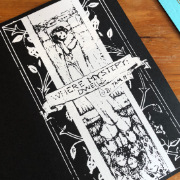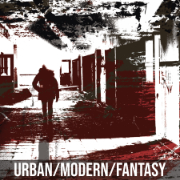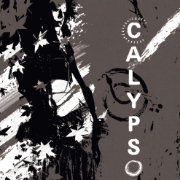Threads & Motifs

filed under mechanics on 30 Nov 2018
tagged motifs and threads
I could have sworn I wrote a post on this, but because I can’t find it I’ll write it again (or for the first time maybe). This is also going into my game inspired by World of Dungeons. Eventually.
Two tools I use frequently when running a game (group or solo) are threads and motifs. Threads are plot events and motifs are themes that come up in play. Using them as callbacks later helps create powerful, tight fiction.
Threads
Threads are inspired by the ones in Mythic GM Emulator. Events that happen in the plot that should ripple through the plot go in this pile.
“The Eye of Arkan was lost in the endless chasm (when the PCs chose to save the hostages instead)” is a thread; later I’ll come back to it, either randomly or by design. Maybe at some point I need a lost artifact and the Eye slots in nicely (how will they recover it?). Or I need to explain a villain’s sudden rise to power (some minor monster discovered it).
Threads can be just about anything that changes the world or drives a storyline. The barmaid is sweet on the fighter. Who was that masked man? The wizard’s familiar wants him to journey to the cloud city by next Tuesday. We just passed through a burned-out village with no bodies in it at all. Why is is raining frogs?
Write them down, in a d66 chart or just in a numbered list. Roll or choose a thread when you need to answer a “why” or a “who” or a “what” or just liven things up. Don’t obsess about using up all the threads.
Some will be more important than others; some will matter more to the players. And sometimes you’ll just realize how the pieces go together, just by having them noted down in front of you.
Motifs
Motifs are inspired by Swords Without Master. They’re themes and imagery that strike you as particular dramatic or noteworthy.
For example, “a spider’s web, gleaming with dew and regrets” might be an image that strikes you when your players face down the giant regret-eating spider in the basement of the castle. You jot it down, and later, when you need dungeon dressing, describe some spider webs and a forlorn skull wailing about its might-have-beens.
Or maybe you go more general with it, writing down a motif about something one of the PCs says while fighting the regret spider. “Regrets are necessary; without them we can’t learn from our mistakes”, maybe. Eventually you introduce an NPC who refuses to regret his own horrific actions, so certain of his own course he’s blinded by it.
These are both callbacks, for the purposes of complications (and that chart I made the other day, LOUCHE. The more of these you weave in, the tighter your story will feel, even if you’re winging it!


